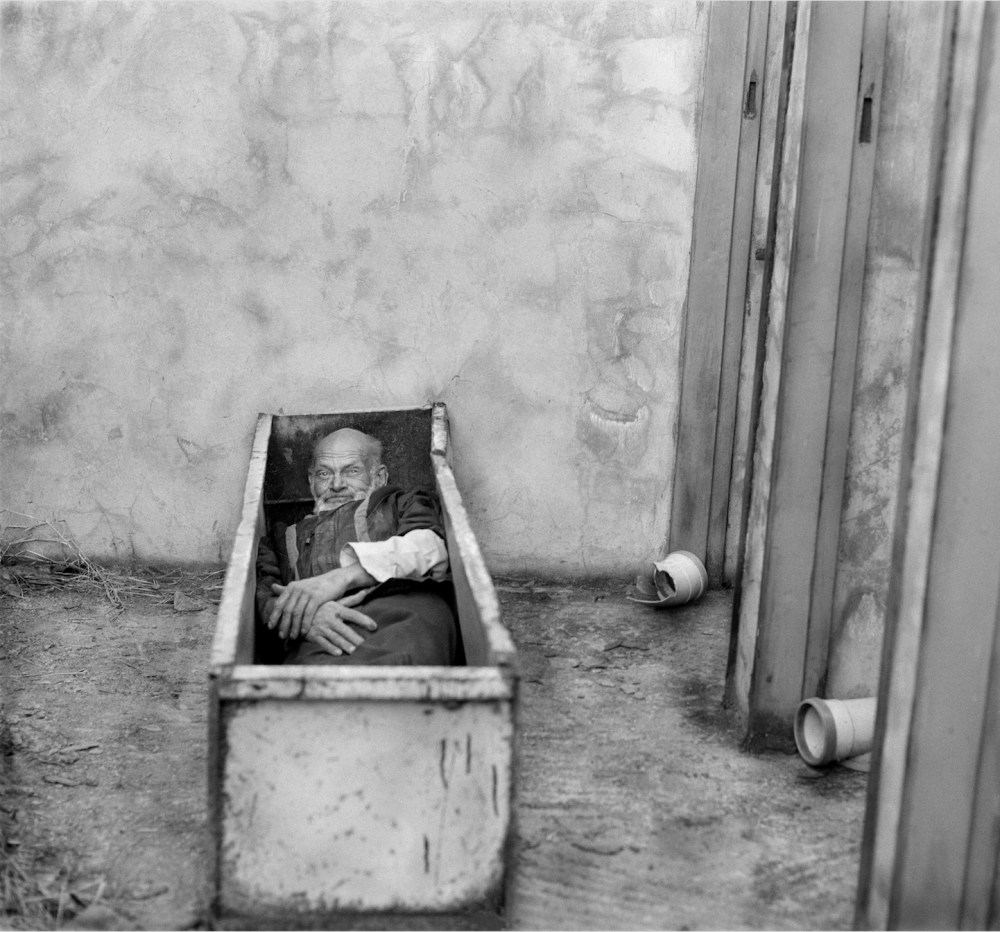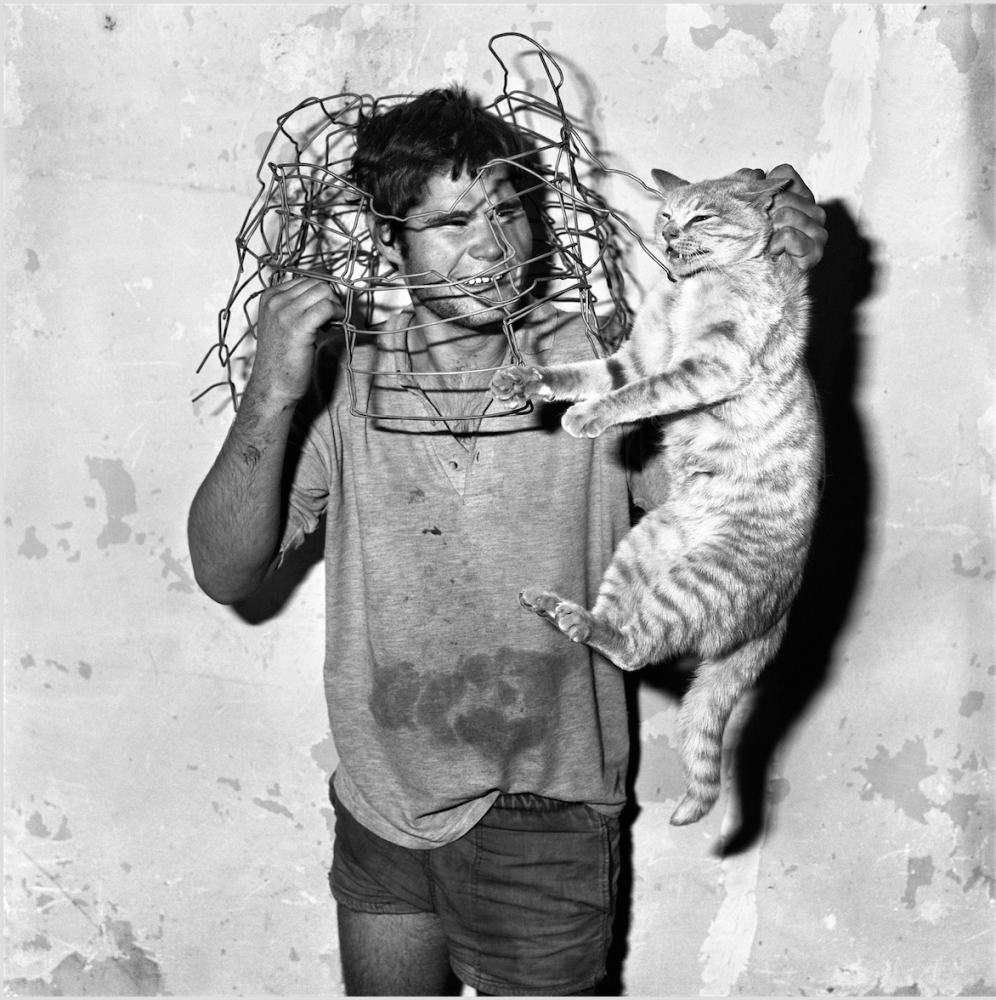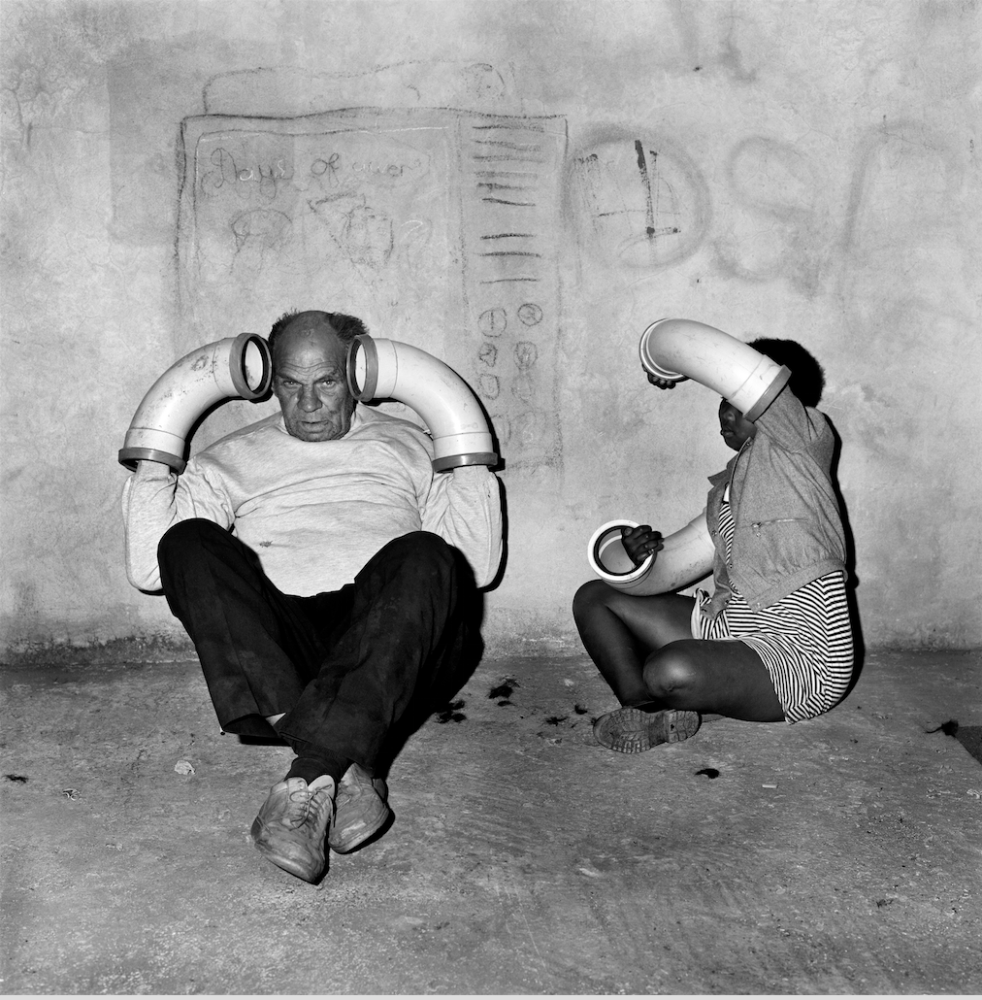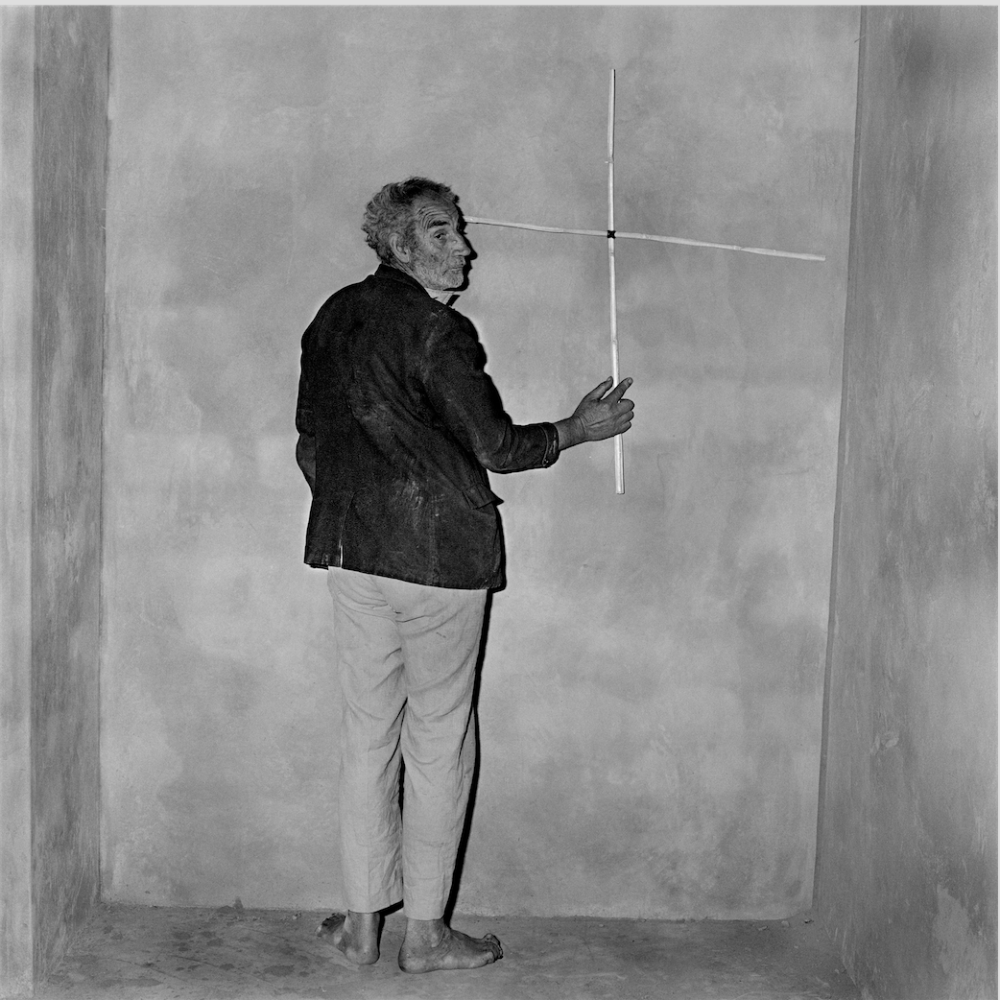MUSÉE: How did an American with a geology background become a Johannesburg-based photographer?
Roger Ballen: My mother worked at Magnum in the 1960’s in New York and then started one of the first photography galleries in the country featuring Andre Kertesz and many other famous photog-raphers. I have always been passionate about photography, but never wanted to make a career of it. In 1981, after obtaining a Ph.D. from the Colorado School of Mines, I married a South African woman and almost at the same time was offered an exciting job in the Mineral Industry in South Africa.
M: What is it about the environments you shoot in that inspires your work? RB: I’m not clear what inspires me. I work with passion, commitment, and discipline. I certainly like the people who have worked with me. They are honest emotionally, and some of them are my best of friends.
 © Roger Ballen. Casket.
© Roger Ballen. Casket.
M: What about the environments you create? How do drawings and sculptures play into the overall effect of your images?
RB: Over the last decade, drawings, paintings, and installations have played a greater and greater role in my work. I view my work as organic creations. One cannot separate the meaning of one element from the next in my photographs. I believe that my best photographs cannot be explained in words.
M: Why do you work exclusively in black and white?
RB: I have worked in black and white for over fifty years, and one cannot separate the meaning of my work from the fact that it is in black and white. I do not have an affinity for color pho- tography as it inherently pretends to mimic reality while only actually expressing photographic reality as expressed by a particular individual.
 © Roger Ballen. Cat Catcher, 1998.
© Roger Ballen. Cat Catcher, 1998.
M: Do you see this as an abstraction of reality? RB: Black and white photography is a minimalistic art form. I am not certain about how best to define
and speak about the word reality. It is quite a mystery to me.
M: Your images are often interpreted as dark, enigmatic portrayals of your subjects. Is this how you perceive reality? Do you feel that your subject matter calls for that type of portrayal?
RB: I do not distinguish between dark and light. They are all part of a larger reality that I have spent most of my life trying to define. It is a mystery to me why so many people find my work dark. I have come to the conclusion that most people who make these comments are alienated from themselves and the human condition. I do not attempt to define my goals in words and do not plan my photographs. The images evolve as I interact with the place, animals, people, and the objects. The meaning of my work is multi-dimensional, layered, and full of opposites.
M: To what extent do you see your work as psychological? Do you have a particular state of con- sciousness in mind when you shoot?
RB: My work has always been visually psychological in meaning. I do not concentrate on social, politi- cal, or cultural issues.
M: Your work contains a great deal of symbolism. How much of this is intentional and how much is unconscious?
RB: My conscious mind works with my unconscious mind when I create my images. There are infinite boundaries between the various levels of the mind. It is arbitrary to use these terms when I create my images.
M: How is your relationship with those featured in your photographs?
RB: First of all you cannot work in the places that I photograph without the complete trust of the individuals who live there. I photograph under violent, unstable conditions where murder, rape, and assault are commonplace. If the relationships that I developed over the years were not mutually ben- eficial there is no way I would have survived.
M: How did your collaboration with Die Antwoord come about?
RB: Die Antwoord came across my previous books Outland and Shadow Chamber in 2006. They have said that when they saw my work for the first time they stopped what they were doing for a year and created Die Antwoord. Shortly after, they contacted me. Soon, with the assistance of my aesthetic, their videos and songs went viral. In 2012 we collaborated on the music video I FINK U FREEKY which has now over 52 million hits on You Tube.
M: Is there a common theme that runs through your body of work?
RB: I have been taking photographs for over fifty years. My work is about my existential condition. The older I get the more mysterious life becomes and the more challenging it becomes to express this experience through photography.
M: Do you have a daily ritual?
RB: I am a very disciplined person. I usually get up and go to sleep at the same time. I arrive at work at 07.30 and around one in the afternoon most days of the week I leave my office to take photographs. During the mornings, I correspond with people and work on the printing and editing of my images. I usually leave work around seven to go home and eat my dinner.
 © Roger Ballen. Copy Cats.
© Roger Ballen. Copy Cats.
 © Roger Ballen. Man With Back to Viewer, 1998.
© Roger Ballen. Man With Back to Viewer, 1998.
All images from the Outland series and appear courtesy of the artist.

